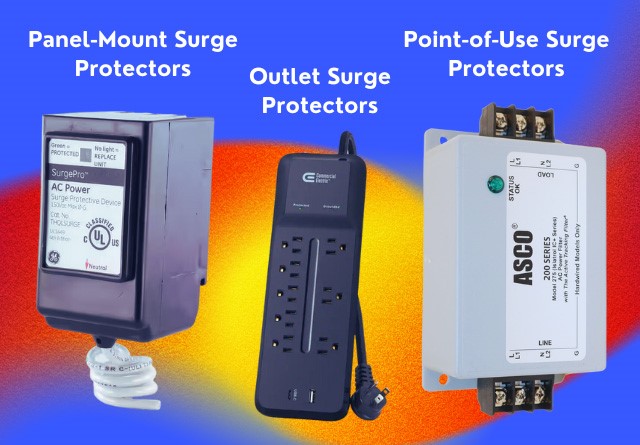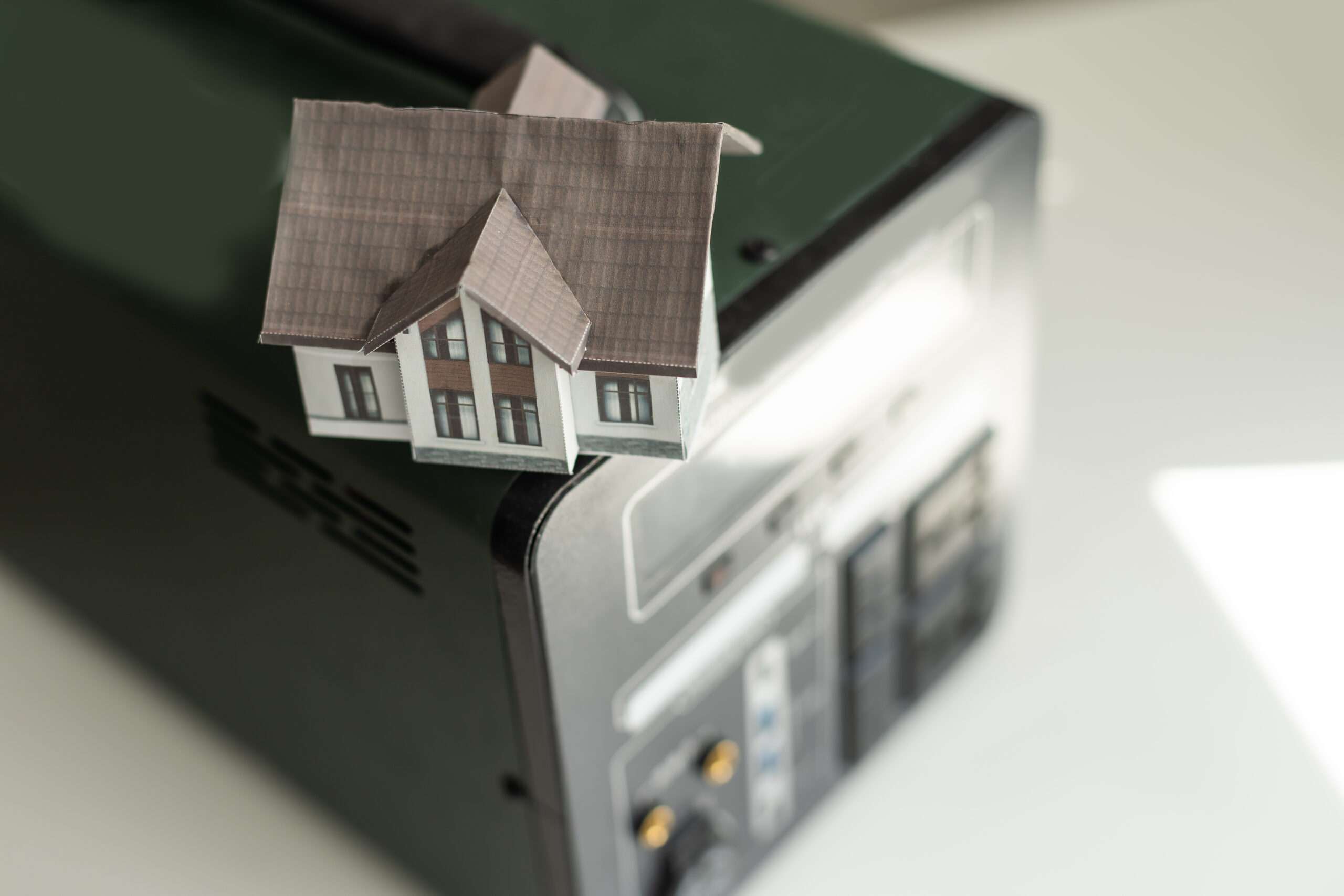Lightning strikes are one of nature’s most powerful forces, capable of delivering millions of volts in an instant. For homeowners, the thought of a lightning strike wreaking havoc on electronics and appliances is alarming. This brings us to an important question: will a surge protector protect against lightning?
In this comprehensive guide, we’ll explore how surge protectors work, their effectiveness against lightning strikes, and additional steps you can take to protect your home. By the end of this article, you’ll have the knowledge to make informed decisions about surge protection and home safety.
Understanding Lightning Strikes and Power Surges
What Happens During a Lightning Strike?
When lightning strikes near a power line, it can create a massive voltage spike that travels through the electrical grid and into your home. These surges can overload your home’s electrical system, causing significant damage to devices and appliances, and in extreme cases, even starting fires.
What Are Power Surges?
A power surge is a sudden increase in electrical voltage that exceeds the normal flow of electricity. While lightning is a rare cause, everyday events like utility switching, damaged power lines, or even large appliances cycling on and off can trigger smaller, yet damaging, power surges.
Will a Surge Protector Protect Against Lightning?
How Surge Protectors Work
Surge protectors are designed to shield electronics and appliances by diverting excess electrical energy away from connected devices. They use metal oxide varistors (MOVs) to detect and redirect voltage spikes to the ground wire, ensuring only safe levels of electricity reach your devices.
Surge Protectors and Lightning Strikes
Whilesurge protectors are highly effective against smaller voltage spikes, their ability to protect against lightning strikes depends on the type of surge protector used. The intense energy from a lightning strike can overwhelm basic plug-in surge protectors, but whole-house surge protectors installed at the electrical panel can handle much larger surges, offering a greater level of protection.
Types of Surge Protectors for Lightning Protection

1. Plug-In Surge Protectors
- Best For:Protecting individual devices like computers, TVs, and gaming consoles.
- Limitations:Not designed to withstand the extreme voltage of a direct lightning strike.
2. Whole-House Surge Protectors
- Best For:Comprehensive protection for all circuits and devices in your home.
- Advantages:Installed at the main electrical panel, these protectors can handle higher voltages and offer layered protection when combined with plug-in models.
3. Point-of-Use Surge Protectors
- Best For:High-value appliances like refrigerators, HVAC systems, and washing machines.
- Advantages:Provides an additional layer of defense for specific devices.
5 Reasons Surge Protectors Are Essential for Lightning Protection
1. Protects Expensive Electronics
Lightning-induced power surges can fry internal circuits, leaving your devices irreparably damaged. A surge protector acts as a safeguard, absorbing excess voltage before it reaches your equipment.
2. Reduces Risk of Electrical Fires
Surges from lightning strikes can overload your home’s wiring, increasing the risk of electrical fires. Whole-house surge protectors prevent excessive voltage from entering your system, mitigating fire hazards.
3. Increases Device Longevity
Even small surges, often unnoticed, can degrade electronic components over time. Surge protectors shield your devices from these cumulative effects, extending their lifespan.
4. Ensures Peace of Mind
Knowing your home is equipped with surge protection provides peace of mind during storms. With a robust system in place, you won’t have to unplug devices every time lightning strikes.
5. Compliance with Modern Electrical Standards
Many building codes now recommend or require surge protection systems for new constructions. Installing surge protectors ensures your home meets safety standards while offering advanced protection.
Additional Steps to Protect Your Home from Lightning Strikes
Surge protectors are an important line of defense, but they’re most effective when combined with other safety measures. Here are additional steps to consider:
1. Install Lightning Rods
Lightning rods don’t prevent strikes but safely direct lightning into the ground, bypassing your home’s electrical system.
2. Use Grounded Outlets
Ensure all your outlets are properly grounded. Grounding provides a safe path for excess electricity, reducing the risk of damage.
3. Unplug During Severe Storms
If a severe storm is forecasted, unplug non-essential devices as an extra precaution.
4. Invest in an Uninterruptible Power Supply (UPS)

A UPS provides temporary battery power and surge protection, ensuring that critical devices like computers or medical equipment remain operational during outages.
5. Schedule an Electrical Inspection
Have a licensed electrician evaluate your home’s electrical system to identify vulnerabilities and recommend upgrades.
Myths and Misconceptions About Surge Protectors
1. “Surge Protectors Prevent Lightning Strikes”
Surge protectors don’t prevent lightning strikes but mitigate the damage caused by the resulting voltage surges.
2. “All Surge Protectors Are the Same”
Not all surge protectors offer the same level of protection. Look for models with high joule ratings and certifications like UL 1449.
3. “Lightning Strikes Are Too Rare to Worry About”
While direct strikes are rare, nearby strikes and other power surges are more common than you think. Surge protectors provide protection against both.
4. “One Surge Protector Is Enough for the Entire Home”
For comprehensive protection, a layered approach combining whole-house and point-of-use surge protectors is recommended.
How to Choose the Right Surge Protector for Lightning Protection
When selecting a surge protector, consider the following factors:
Joule Rating
The joule rating indicates how much energy the surge protector can absorb before failing. For lightning protection, choose a protector with a joule rating of 2,000 or higher.
Clamping Voltage
Lower clamping voltage means the protector will activate sooner, providing better protection for sensitive electronics.
Response Time
Opt for a surge protector with a fast response time to ensure your devices are shielded immediately.
Certification
Look for surge protectors certified by Underwriters Laboratories (UL 1449) to ensure they meet safety standards.
Benefits of Professional Surge Protector Installation
Installing a surge protector, particularly a whole-house model, is a task best left to licensed electricians. Here’s why:
- Expert Assessment: Electricians can evaluate your home’s electrical system to recommend the most suitable surge protection.
- Proper Installation: Professional installation ensures compliance with local codes and optimal performance.
- Warranty Protection: Many surge protectors come with warranties that require professional installation to remain valid.
Key Takeaway: Essential Insights for Your UnderstandingKey Takeaway
Lightning strikes are unpredictable, but their effects don’t have to be catastrophic. Surge protectors provide a crucial layer of defense, ensuring your electronics and home remain safe from the damaging effects of voltage surges. By investing in a combination of whole-house and point-of-use surge protectors, you can enjoy peace of mind knowing your home is prepared for whatever nature throws your way.
Ready to safeguard your home? Equip yourself with the right surge protection today and protect your investment from unexpected power surges.
People Also Ask
Can a power strip protect against lightning?
Basic power strips lack surge protection features and won’t protect against lightning. Look for surge protectors specifically designed for this purpose.
How often should I replace a surge protector?
Surge protectors should be replaced every 3–5 years or after a significant surge event.
Are whole-house surge protectors expensive?
Whole-house surge protectors cost between $300 and $700, including installation, making them a cost-effective investment compared to potential lightning damage.
Does home insurance cover lightning damage?
Many homeowner insurance policies cover damage from lightning strikes, but prevention with surge protectors is often more cost-effective.
Can surge protectors handle direct lightning strikes?
While no device can handle a direct strike, surge protectors mitigate damage from indirect strikes and other power surges.
Shield Your Home from Lightning Strikes with Boca Electrical Services, Inc.
Protecting your home from lightning strikes and unexpected power surges is not just a precaution—it’s an essential step toward safeguarding your valuable electronics and ensuring your family’s safety. Surge protectors, particularly whole-house models, provide critical defense against damaging voltage spikes. At Boca Electrical Services, Inc., we specialize in surge protection solutions tailored to your home’s unique electrical needs. With over 38 years of combined expertise, we ensure your electrical system is equipped to handle even the most extreme conditions.
Explore more tools and tips mentioned in this article or visit other sections of the Softlist website for in-depth insights into home electrical safety. Ready to take action? Contact Boca Electrical Services, Inc. at +1 561-235-2513or stop by our office at 158 NW 16th St #2, Boca Raton, FL 33432, United States, for personalized recommendations and professional surge protector installations. Don’t leave your home’s safety to chance—secure your peace of mind today.